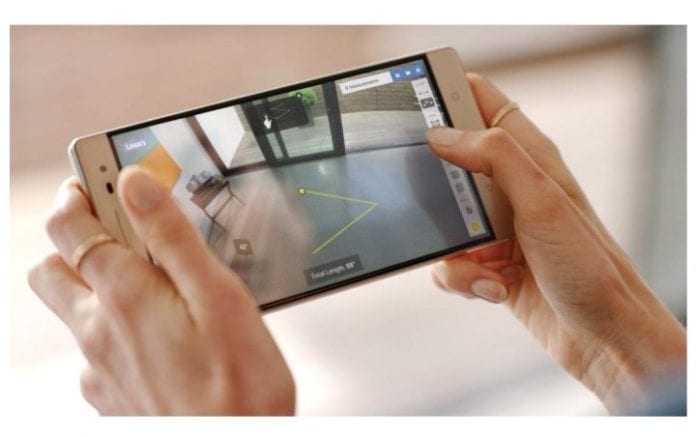The promise of augmented and virtual reality will be dependent on 5G networks that can handle the speed and capacity requirements of AR and VR.
Editor’s Note: In the Analyst Angle section, we’ve collected a group of the industry’s leading analysts to give their outlook on the hot topics in the wireless industry.
New technology today requires three things to become ubiquitous: hardware, software and connectivity. If one of these is weak, the application of any new technology struggles. This is especially true with augmented reality and virtual reality, where head-mounted displays, associated software tools and the connectivity layer are areas of aggressive development. A massive bandwidth requirement for premium content combined with ubiquitous all-day device usage will bring about an unprecedented network strain. Qualcomm and ABI Research collaborated to produce a whitepaper on this topic, “Augmented and Virtual Reality: The First Wave of 5G Killer Apps.”
Why do we need 5G for AR/VR?
While AR and VR are receiving ample attention, “5G” is not far behind in terms of early discussion and excitement surrounding its potential. The true advantage of 5G in relation to AR/VR manifests in three components: more capacity, lower latency and better network uniformity. Some applications rely on one component more than another, but supporting all three simultaneously is critical to enabling all AR and VR use cases under the same network.
Following the guidelines set by IMT-2020, 5G aims to deliver:
• 20 gigabit per second peak data rates.
• 100 megabit per second data rates, even at cell edges.
• 10 Mbps per square meter area capacity.
• One millisecond roundtrip over-the-air latency.
This improves on current 4G capabilities with a 10-times increase in throughput, 10-times decrease in latency and 100-times increase in traffic capacity. Even with expected improvements, 4G capabilities will fall short when considering AR and VR uptake to the mass market and the race to increase the quality of the experience. AR and VR promise to transform the way content is consumed and communicated, and will no doubt help a wide variety of industries increase productivity and change the way they do business.
Workflow assistance and “see-what-I-see” remote interaction and guidance have seen strong uptake already among AR rollouts. On the VR side, major investment in VR-focused video has already begun, growing alongside the blossoming VR gaming market in content quantity, quality and variety. Both AR and VR applications can be very sensitive to network performance, with any interruption having a more significant negative impact on user experience, which reinforces the role of continued enhancements of mobile networks.
AR/VR applications enabled by 5G
Although current 4G networks are sufficient for some initial AR and VR applications, the introduction of 5G will strengthen existing experiences, enable novel ones and make these experiences available for mass adoption. 5G will not only improve, but will also be a requirement for some of the most exciting AR and VR use cases. The white paper examines four of these use cases, deemed by Qualcomm and ABI as exciting and interesting to watch when looking out through a 5G timeline. These include:
• Automotive video streaming.
• Event venue upload and download.
• Six degrees of freedom (6DoF) video.
• Remote control and tactile internet.
When examining the automotive market alongside a potential 5G timeline, increased carpooling and semi-/fully autonomous vehicles will begin to have an impact. Growth in these areas will present additional time for content consumption, but also challenges in terms of capacity and network uniformity requirements for streaming content. Streaming content to a moving vehicle presents unique challenges, such as network mobility, but it is something 5G will be able to cater to.
Upload and download applications at densely populated venues are already stressing wireless networks, and content upload by thousands of simultaneous users at a stadium will demand extreme capacity. While 4G is capable of handling most peaks of extreme concurrency seen today, the advent of worn, ubiquitous capture and consumption devices will exponentially increase throughput requirements. Imagine being at the Super Bowl and trying to live stream the kickoff along with 50,000 other fans using the multiple cameras in your convenient and hands-free AR glasses. Also, with the unique data visualization and immersive capabilities of AR and VR, novel in-stadium experiences will grow and similarly require higher capacity than currently possible.
The impressive growth of video streaming will only become more substantial as AR and VR grow in market share, with next-generation content formats like 6DoF video stressing networks even more with an individual data rate requirement in the range of 200 Mbps to 1 Gbps. Adding a spatial component to recorded video is a difficult proposition, but also an incredibly compelling one to deliver more immersive AR and VR experiences.
With great improvements in end-to-end latency promised with 5G, novel applications such as tactile internet begin to come into focus. Ideal end-to-end latency requirements in the 10 millisecond range will push the boundaries of these networks and could realistically require the target 5G roundtrip over-the-air latency goal of 1 millisecond. The early uptake of remote expertise applications in enterprise can be extrapolated to highlight the promise of tactile internet.
These use cases illustrate the need for additional capacity, lower latency, and more uniform experiences that 5G will bring at new levels of cost and energy efficiency, without which the industry will not be able to build solid business cases when mobilizing VR and AR applications. Moreover, new use cases for AR and VR will manifest as the capabilities of 5G networks actualize. ABI Research expects AR and VR to transform industries and 5G will be crucial in making that a reality.

